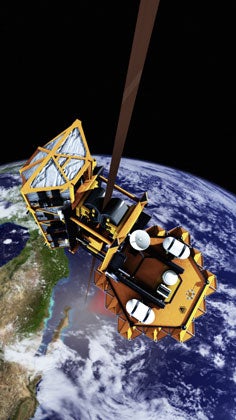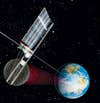Going Up?
Will the Japanese be the first to elevate to space?


Space Elevator
One of the most promising technologies for the aspiring outer-space commuter is the space elevator. The concept, like quite a few others, was pressed into the public imagination by Arthur C. Clarke, who in his 1979 novel The Fountains of Paradise described a incredibly thin, incredibly strong carbon filament with one end anchored on Earth and the other extending up to a satellite in geostationary orbit. Now, a group of Japanese scientists are convinced that they can build a space elevator more quickly and cheaply than has been believed possible.
Such a cable could convey cargo into space very cheaply and easily. Carriages would travel up and down the cable under modest power, not the vast expenditures of energy that are currently needed to send anything into orbit.
Technology has crept closer to making it a reality: we have geostationary satellites, and carbon nanotubes promise to be strong and light enough to form the filament, if they can be produced in sufficient quantity. A space elevator would be tens of thousands of miles long.
A few initiatives already exist to make a space elevator a reality. Elevator:2010 sponsors annual contests; LiftPort promises to have an elevator built by October 27, 2031, and is selling tickets on it, at $25/ounce.
The Japan Space Elevator Association, a new player in the field anticipates that Japan’s industrial and research power — “using the technology employed in our bullet trains,” according to Association director Yoshio Aoki — will be able to surmount the outstanding obstacles. The carbon fiber, which needs to have 180 times the tensile strength of steel, is currently under development by Japanese textile companies. The total price tag estimated for erecting the elevator is being estimated at just a trillion yen, or about 10 billion dollars.
[Via the Times of London]